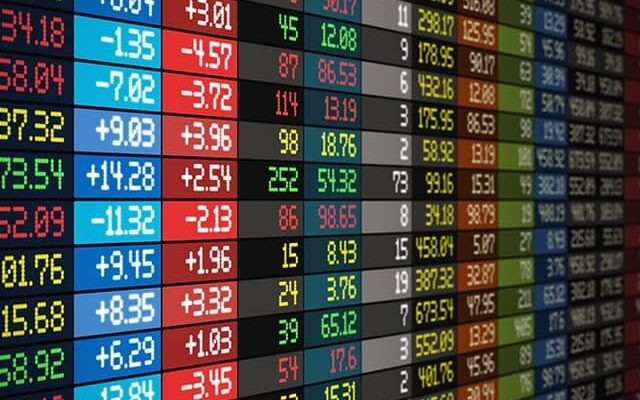(AOF) – To respond to the environmental emergency, three major French groups (CEVA Logistics, Engie and the Sanef group) are creating ECTN Alliance (European Clean Transport Network Alliance), a concrete solution for the energy transition of road freight transport in Europe . The ECTN alliance will build and develop a network of terminals dedicated to heavy goods vehicles, with low-carbon energy supply solutions for the transport of goods on European motorways.
This innovative system meets the range limits and load constraints of electric trucks.
Eventually, the network of truck terminals will be open to all shippers and carriers, offering easy access to low-carbon biogas, hydrogen and electric power solutions for charging and refueling trucks.
Strategically articulated on European motorways, the network of terminals will integrate a specific IT solution to allow transport companies to plan their routes and their charging times in the fastest and most carbon-efficient way.
The network of terminals also aims to improve the working conditions of truck drivers by allowing them to use each terminal as a relay station for their trailer and thus cover shorter distances.
AOF – LEARN MORE
Key points
– Group created in 2008 from the GDF-Suez merger, world leader in energy transition, world’s leading producer of non-nuclear electricity, leading supplier of energy efficiency services, second supplier of environmental services;
– Activity of €57.9 billion with strong positions in Europe, where 64% of revenues come from, including 36% for France, ahead of the Americas (16%);
– Business model based on control of the value chain and on refocusing on 5 businesses: renewables, infrastructure, energy solutions, energy production & supply and energy and nuclear management;
– Capital controlled at 23.64% by the State, alongside Caisse des dépôts (4.59%), and at 3.2% by employees, Jean-Pierre Clamadieu chairing the board of directors and Catherine MacGregor providing general management;
– Controlled financial structure with €25.2 billion in net debt giving a leverage effect of 3.6 and which will be reinforced on 2
n/a
semester by the disposal of Equans,.
Challenges
– Annual growth strategy for Renewables increased to 4 GW between 2022-25 and 6 GW between 2026-30 via:
– simplification of the group with 4 Business Units compared to 25 and an international presence reduced to 30 countries compared to 53,
– deployment of “BRIGHT”, specialized in multi-technical services,
– at least €11 billion in disposals and €15 to 16 billion in growth investments;
– and leading to an increase in profits (€3.2 to €3.4 billion in 2023 and €3.3 to €3.5 billion in 2025) and a debt leverage effect of less than 4;
– Innovation strategy organized in transversal roadmaps: Horizons: 1 / process efficiency, 2 / dissemination of new technologies, 3 / monitoring and research for future growth / Ecosystems: 23 thematic Labs, Engie Factories, internal platforms (DigiPlace , Common Data, Hub, Inner Source);
– Environmental strategy aiming for carbon neutrality by 2045: 2 2030 objectives: 70% reduction in CO2 emissions compared to 2016 and increase to 58%, vs 34% at the end of 2021, of renewable energies in electricity production,
total phase-out of coal in Europe in 2025 and elsewhere in 2027 / articulated between the growth of sustainable activities and risk management in production / financed by green loans;
– Strong growth in profitability thanks to the leading position in Brazil, a key market for the group, the CCGT fleet (the largest in Europe), renewables and long-term partnerships with gas producers, such as Gazprom.
Challenges
– To compensate for the shutdown of the Belgian nuclear power plants in 2025, imperative for growth in profitability from investments in renewables, the performance of Energy Solutions and the contribution of infrastructures;
– Recovery of EVBox, leader in charging solutions, handicapped by the shortage and inflation of components;
– Achievement of long-term ambitions: in renewables, 50 GW of installed capacity by 2025 and 80 GW by 2030, in infrastructure, annual growth of 1.5% until 2024 and, for Energy solutions, growing pipeline to €14 billion;
– 2022 objectives: recurring net income between 3.3 and 3.5 billion;
– Distribution rate of 65 to 75% until 2023 and dividend of €0.85 for 2021.
Learn more about the Utilities sector
Greater disparities between utilities
The World Energy Markets Observatory highlights a wide disparity in retail energy prices in Europe. Suffering from both the effect of the rise in wholesale prices and high volatility in selling prices to end consumers, the profitability of players is under pressure. While the sixteen largest European energy suppliers benefited last year from a significant increase in their turnover (+47% compared to 2020), their gross operating margin (Ebitda margin) , deteriorated from 20.2% to 19.6%. Those who had to resort to purchasing electricity on the market had to pay these additional volumes much more expensive than the level of sale prices already set and therefore saw their margins deteriorate.
Faced with the lower availability of its nuclear fleet, EDF, renationalised, should post an annual loss of 29 billion euros in 2022. Engie is doing better because it succeeded in reducing its imports of Russian gas in the first half while benefiting from high electricity prices and its increased exposure to renewable sources.
